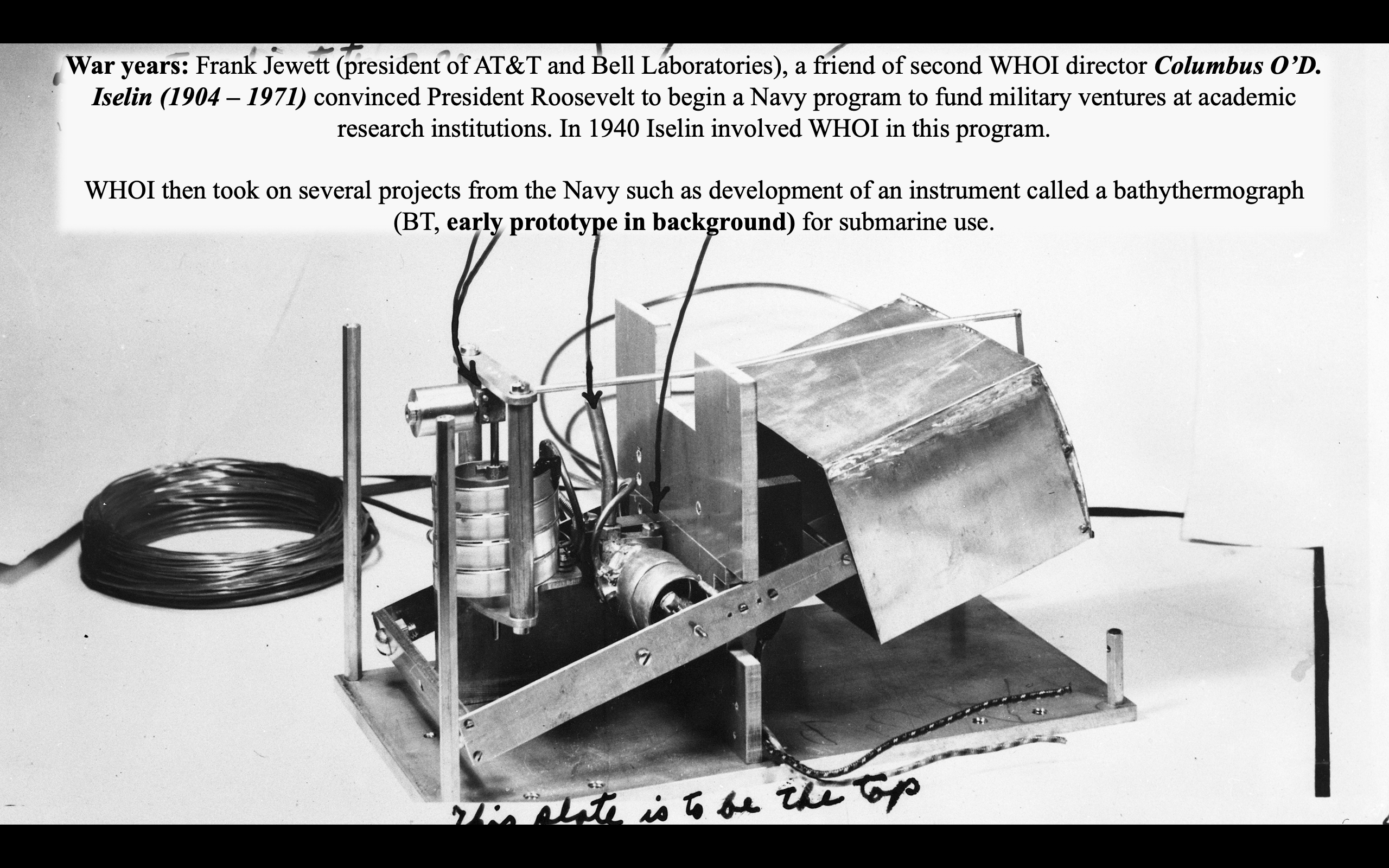150 Years of Woods Hole Science
40

Background image: Submarine bathythermograph, developed at WHOI., 1963. Credit: WHOI Image Archives; Photo courtesy of WHOI Archives; with special permission of WHOI Digital Assets Licensing; from: https://images.whoi.edu/view-item?key=SXsiUCI6eyJ2YWx1ZSI6IjE3MDIzMCIsIm9wZXJhdG9yIjoxLCJmdXp6eVByZWZpeExlbmd0aCI6MywiZnV6enlNaW5TaW1pbGFyaXR5IjowLjUsIm1heFN1Z2dlc3Rpb25zIjo1LCJhbHdheXNTdWdnZXN0IjpudWxsfX0&WINID=1643768606696#6PlW-aAH2KcAAAF-uD5aUQ/170230
References:
Cullen, V., 2005. Down to the sea for science: 75 years of ocean research, education, and exploration at the Woods Hole Oceanographic Institution. Woods Hole Oceanographic Institution.
Revelle, R., 1980. The Oceanographic and how it grew. In Oceanography: the past (pp. 10-24). Springer, New York, NY.
pp. 19-20:
”The Second World War profoundly changed the character of the Woods Hole Oceanographic Institution. Prior to the war, it could be described as a small research station, occupied mainly in the summertime by faculty members from several universities. Except for Atlantis, it was much like its cousin, the Marine Biological Laboratory…After the War, the Institution had turned into a huge laboratory with a permanent staff of several hundred people, including many professional research oceanographers and a fleet of ships. But if the Institution was radically changed, so was the science of oceanography in its relationship to the government and the American people. In this transformation, the Oceanographic played a central role, in part because of its location, on the open sea but near the seat of government and the great eastern centers of science, and in part because of the patriotism and vision of Columbus Iselin.”
p. 20:
“As American participation in the War came closer, Columbus persuaded the Trustees to turn the entire Institution into a laboratory for naval oceanographic research. The top floor was soon occupied by a group of researchers, including Paul Fye and James Coles, who studied underwater explosives and were known locally as the ‘bang boys’…They were joined by members of other universities…including…many younger men who rapidly became and remained marine scientists. Other staff members like H. R. Seiwell and Mary Sears went on active duty as reserve officers.”